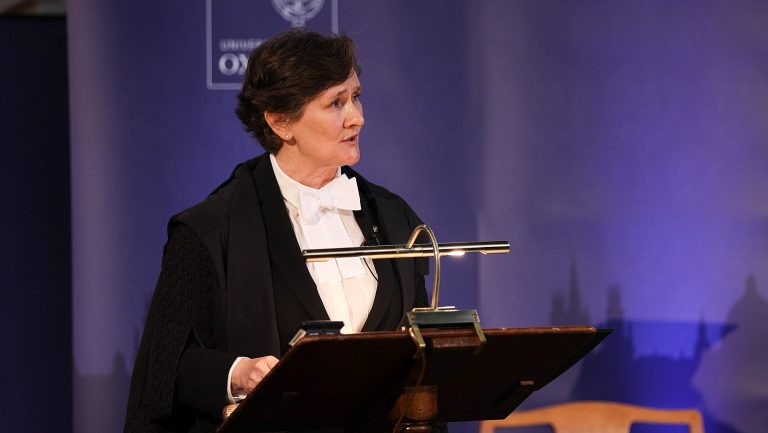Earlier this year, Cherwell attended Voices from North Korea, an event organised by Freedom Speakers International (FSI), a South Korea-based NGO working with North Korean refugees. Over the course of the evening, I spoke to three defectors – Sujin Kim, Yuna Jung, and Riha Kim – as well as organisers whose work centres on helping refugees rebuild their lives. As three of 30,000 North Korean defectors now living in South Korea, their experiences are not a single story of escape, but a series of unique journeys that complicate how we think about freedom, survival, and belonging.
Journeys of Escape
Yuna Jung left North Korea in 2006. For her, escape began, not at a border, but in front of a television screen. Smuggled South Korean dramas provided insight to a different, better life – contradicting everything she had been taught. She describes them as an “education”; a slow process of unlearning rigid state ideology and imagining a life beyond it. Until then, her future had been clearly mapped out – university, a job as an elementary school teacher, and passing on the same ideology to the next generation. Watching these dramas made her realise this life was no longer for her.
When she decided to leave, she acted with startling directness. The daughter of a military general, Yuna’s status gave her options unavailable to most. She was able to cross the border by asking to be introduced to a military captain as a date – a possibility created by her education, background, and proximity to power.
“I just told him directly that I wanted to escape,” she explains to me. “I didn’t hesitate, just told him, ‘I have money. I can pay. Can you help me?’ and he did.”
Riha Kim, on the other hand, had no wealth, no connections, and no influence to rely on. Instead, she spent several years quietly gathering information, trying to make contacts, and waiting for an opportunity. After several failed attempts, she finally escaped in 2015 through a friend’s house close to the border.
Her decision to leave was shaped by her work as a doctor in North Korea. Again and again, she found herself unable to provide even the most basic, life-saving care. The medicines were simply not available. “It was not right,” she says. She describes being trapped within a system that refused to acknowledge its own failures, even as patients suffered and died in front of her.
Sujin Kim’s story was different again. She defected in 2003, driven by hunger as much as by fear. The picture she paints of life under the regime is brutal; food was so scarce that she was often malnourished from as young as twelve. “Growing up in the regime, I had never really imagined freedom,” Sujin tells me. But desperation eventually inspired imagination: “I couldn’t think of bringing a child into that hardship.”
She paid a broker to help her cross the heavily monitored and deadly Tumen River which separates North Korea from China. What followed, however, was not freedom. Instead, the broker held her in captivity. She tried to escape repeatedly but was caught every time. It was not until 2007 – four years later – that Sujin finally reached South Korea.
Life After Escape
It is easy to imagine escape as a single, defining moment: a border crossed, a door closed behind you. But what I heard repeatedly was that freedom is a far longer process. For most defectors, South Korea brings safety, but not belonging.
A generational divide shapes much of this experience. Older South Koreans, raised on decades of anti-communist education, can be openly hostile. Younger generations, who have only ever known a divided Korea, are less overtly discriminatory – but often indifferent. “They think we are cool,” as Yuna puts it. There is curiosity, but little understanding.
Thomas, a volunteer with FSI, explains how this tension plays out in everyday life. If his South Korean mum knew he was helping defectors, he says, she would be “outraged”. “She actually warns me from time to time that, because I am a chemistry student, the North Koreans might kidnap me or something.” Her fear is sincere, he explains, but it still erects a barrier for people trying to integrate.
Language is one of the most powerful of these barriers. Even though North and South share the Korean language, after 70 years of division there are significant differences in structure, vocabulary and pronunciation. Defectors inevitably stick out. Yuna remembers the day she started to be treated more like a human being: “One day I tried to speak English with foreigners at church, and all of a sudden the treatment was very, very different.” Language, she realised, was not just about communication, but a route to dignity.
This is where Freedom Speakers International aims to help. Founded in 2013 by Casey Lartigue Jr. and Eunkoo Lee, FSI started out as an English tutoring programme. It has since grown into something much larger. To date, FSI has helped more than 600 defectors find their voice and develop confidence through English and public speaking lessons.
For the women I spoke to, FSI has offered more than skills – it has provided a home, a space to reclaim their stories. Sujin describes how transformative this was for her. For years after arriving in South Korea, she focused solely on survival, enduring discrimination, and isolation in a society she had never been prepared for. Learning English and joining FSI became a turning point; she was finally ready to confront what she had lived through.
Casey tells me a similar story about Songmi Han, a refugee with whom he co-authored a book. When Songmi joined FSI in 2019, she was on the verge of suicide. “She was looking for something to save herself,” he says. English became that lifeline. After receiving counseling, she began working part-time at FSI, where the team noticed her extraordinary ability to tell stories.
When Casey suggested turning them into a book, she resisted. “Nobody wants to read my stories,” she told him. “They are too sad.” Eventually, she agreed. “She went from being anonymous in depression to making a real difference in the world,” Casey says. Songmi now describes herself as “one of the puzzle pieces in unification”.
Speaking Out
But speaking out carries real risks. I ask whether encouraging defectors to tell their stories on international stages ever feels dangerous.
Casey tells me about Yeonmi Park, a defector who escaped in 2013 and was later informed that she was number one on North Korea’s target list. He urged her to think carefully. She returned the next day with her answer: she wanted to be so well known that if anything happened to her, the entire world would know.
Riha tells me she is “always scared”. Her family remains in North Korea, and although she was never officially labelled a defector – only a “missing person” – the risk never fully disappears. Still, she is resolute. “If I don’t do this work, then who will speak out?”, she asks. “It is my mission and my responsibility to be a public speaker.”
Another Border: Technology
Listening to these stories, one idea keeps resurfacing. Freedom is never just about crossing a border. It is about being understood, taken seriously, about learning how to exist in a society you were never prepared for. In an increasingly digital world, technology has become yet another barrier to integration.
It felt significant, then, that Voices from North Korea was hosted in the Computer Science faculty. What emerged in discussions was how fundamentally different defectors’ struggles with technology are from those of, say, older generations who find smartphones frustrating. Growing up in near-total technological isolation can make the entire concept of the digital world feel alien.
Before she arrived in South Korea, Yuna had no real understanding of what the internet actually was, beyond what she had glimpsed in South Korean K-dramas. Despite attending university, the only technology she had used was PowerPoint. “I felt very naive about the internet world,” she says. “It gave me a headache all the time because I didn’t understand it.”
Sujin recalls attending an education centre in Seoul and spending hours simply learning how to type – something Yuna, with access to university computers, had at least encountered before.
More broadly, the defectors described challenges not only with digital skills but the concept of digital identity itself. For many, the idea of an online account, or personal digital space that belongs to you, is deeply disorienting. Hayoun Noh, the event organiser, is a PhD candidate in the Human-Centred AI group in the Department of Computer Science. Her research explores the intersection of technology and mental health, and how digital tools might be better designed for North Korean defectors.
Her research has shaped how she thinks about technology in all our lives. “One thing that has really shocked me is how toxic social media is for them,” she tells me. “We all know what it feels like to scroll down Instagram and feel sh*t about yourself. But when these defectors told me they would be browsing Instagram and seeing all these luxurious lives of South Koreans, I wondered if they would ever be able to achieve this level of happiness.”
“For many, the concept that social media is not a mirror of reality is entirely new. It really makes you wonder if we just got used to all the lies?… because we are so desensitised to all these superficial lives,” Hayoun reflects.
These challenges sit within a deeply troubling context. South Korea has the second-highest suicide rate, and for people aged 10-39, suicide is the leading cause of death. For North Korean defectors, discrimination, isolation, and lack of access to support intensify an already severe crisis.
Hayoun explains why she shifted her research focus: “I got to know that actually even the concept of mental health is a privilege…. Many people who are extremely vulnerable and marginalised do not even have the access to doctors or medication…. As a South Korean myself, I had always been aware of the difficult stories of North Korean defectors. I wanted to focus on this quite extreme case where people do not have an awareness of mental health, questioning who is actually systematically excluded help?”.
What Voices from North Korea made clear is that freedom is not a single moment, but a series of border crossings – physical, linguistic, social, and digital. Crossing one does not guarantee passage through the next. But for the women I met, speaking out remains both an act of resistance and a way forward.










